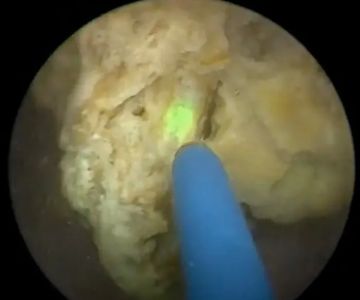Essential Dog Grooming Tools for Every Pet Owner
As a pet owner, keeping your dog clean and healthy is a responsibility that goes beyond just feeding and walking. Grooming plays a crucial role in your dog's overall well-being, helping maintain a healthy coat, skin, and nails. When it comes to dog grooming, there are a few essential tools that every pet owner needs to ensure their dog's grooming routine is both effective and enjoyable. Whether you’re new to dog grooming or you’ve been doing it for years, this guide will provide you with everything you need to get started.

VCA Arboretum View Animal Hospital, 2551 Warrenville Rd, Downers Grove, IL 60515, USA
See Details1. Brushes and Combs
The foundation of dog grooming starts with the right brush. Different dogs have different coat types, and each coat type requires specific tools. For example, a dog with a long, flowing coat may need a slicker brush to prevent matting, while short-haired dogs may only need a bristle brush to remove dirt and loose fur. Regular brushing helps remove tangles, prevents matting, and promotes healthier fur growth.
For breeds with dense undercoats, such as Huskies or Golden Retrievers, an undercoat rake is essential to remove shedding fur and prevent it from accumulating. It’s important to groom your dog frequently to avoid fur buildup and discomfort, particularly in long-haired breeds.
2. Nail Clippers
Clipping your dog's nails is an essential part of grooming. Overgrown nails can be painful for your dog and can lead to health issues such as joint problems or infections. Nail clippers come in different styles, including scissor-type, guillotine-type, and plier-type clippers. The type you choose depends on your preference and the size of your dog’s nails.
It’s important to trim your dog’s nails regularly, typically every few weeks, to avoid them getting too long. If you're nervous about cutting your dog’s nails, a quick visit to your vet or a professional groomer can help you get the hang of it.
3. Dog Shampoo and Conditioner
Bathing your dog is an essential part of the grooming process, and using the right shampoo and conditioner can make all the difference. Always choose products specifically designed for dogs, as human shampoos can cause skin irritation. If your dog has sensitive skin or allergies, there are hypoallergenic and gentle formulas available.
Regular baths help keep your dog clean, but over-bathing can strip natural oils from their skin, so it’s essential to find the right balance. Use a gentle dog shampoo, and follow up with a conditioner to keep their coat soft and manageable.
4. Grooming Wipes and Sprays
For quick clean-ups between baths, grooming wipes are a convenient and easy-to-use option. They can help remove dirt, dust, and odors from your dog’s coat, paws, and ears. These wipes are particularly useful for dogs that don’t like baths or for cleaning up after outdoor adventures.
There are also grooming sprays available that help detangle fur and give your dog’s coat a nice shine. These sprays can be especially useful for dogs with long, tangly fur or those prone to shedding.
5. Ear Cleaners
Cleaning your dog’s ears is just as important as brushing and bathing. Dogs with floppy ears or long hair around their ears are particularly susceptible to ear infections. Using an ear cleaner specifically formulated for dogs can help remove dirt, wax, and debris from your dog’s ears, preventing infections and discomfort.
Make sure to clean your dog’s ears regularly, but avoid inserting anything into the ear canal. Instead, use a soft cloth or cotton ball to gently wipe the outer part of the ear.
6. Teeth Cleaning Tools
Dental health is often overlooked in dog grooming routines, but it's just as important as coat and nail care. Dental diseases can lead to discomfort, bad breath, and even systemic health issues. To maintain your dog’s oral health, you need a good dog toothbrush and toothpaste. Never use human toothpaste, as it can be harmful to your dog.
Regular brushing can help prevent tartar buildup and keep your dog’s teeth clean. Start brushing your dog’s teeth at a young age to get them accustomed to the process. For older dogs, dental chews and treats can help supplement brushing.
7. Grooming Table and Restraints
If you're doing a full grooming session at home, having the right setup is essential. A grooming table is highly beneficial for maintaining control and making the grooming process more comfortable for both you and your dog. Some tables come with adjustable heights and restraints to keep your dog in place during grooming.
Although this may not be a necessity for every pet owner, having a proper grooming space can make the process much smoother, especially when you’re dealing with larger or more active dogs.
Making Grooming Enjoyable for Your Dog
Grooming doesn’t have to be a stressful experience for your dog. With the right tools and a little patience, it can be an enjoyable bonding time. Start slow, use positive reinforcement, and always make grooming a fun and rewarding experience. For dogs that are particularly sensitive or nervous, try introducing grooming tools gradually and reward them with treats for good behavior.
In conclusion, regular grooming is an essential part of maintaining your dog’s health and happiness. With the right tools and techniques, you can ensure that your dog’s grooming experience is comfortable, effective, and enjoyable for both of you. From brushes and nail clippers to shampoos and ear cleaners, having a complete grooming kit will ensure your dog’s coat, skin, and teeth stay in top condition. If you’re unsure about any aspect of grooming, don’t hesitate to consult your vet or a professional groomer for advice and guidance.










